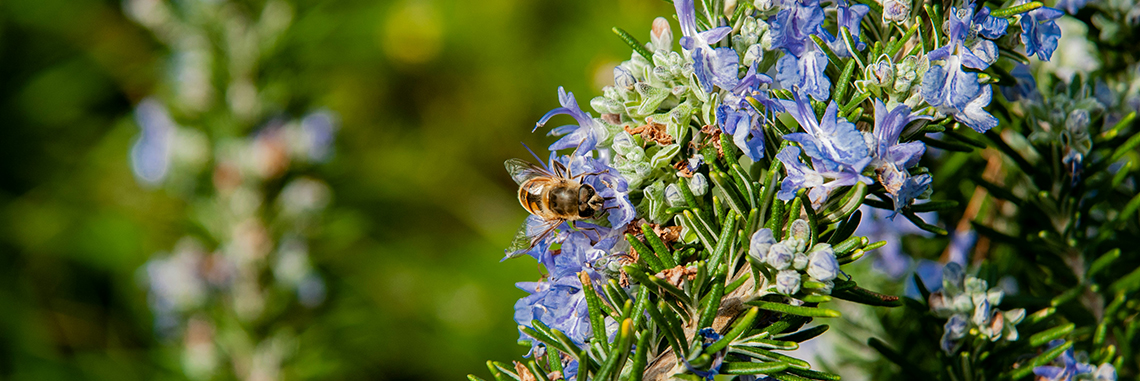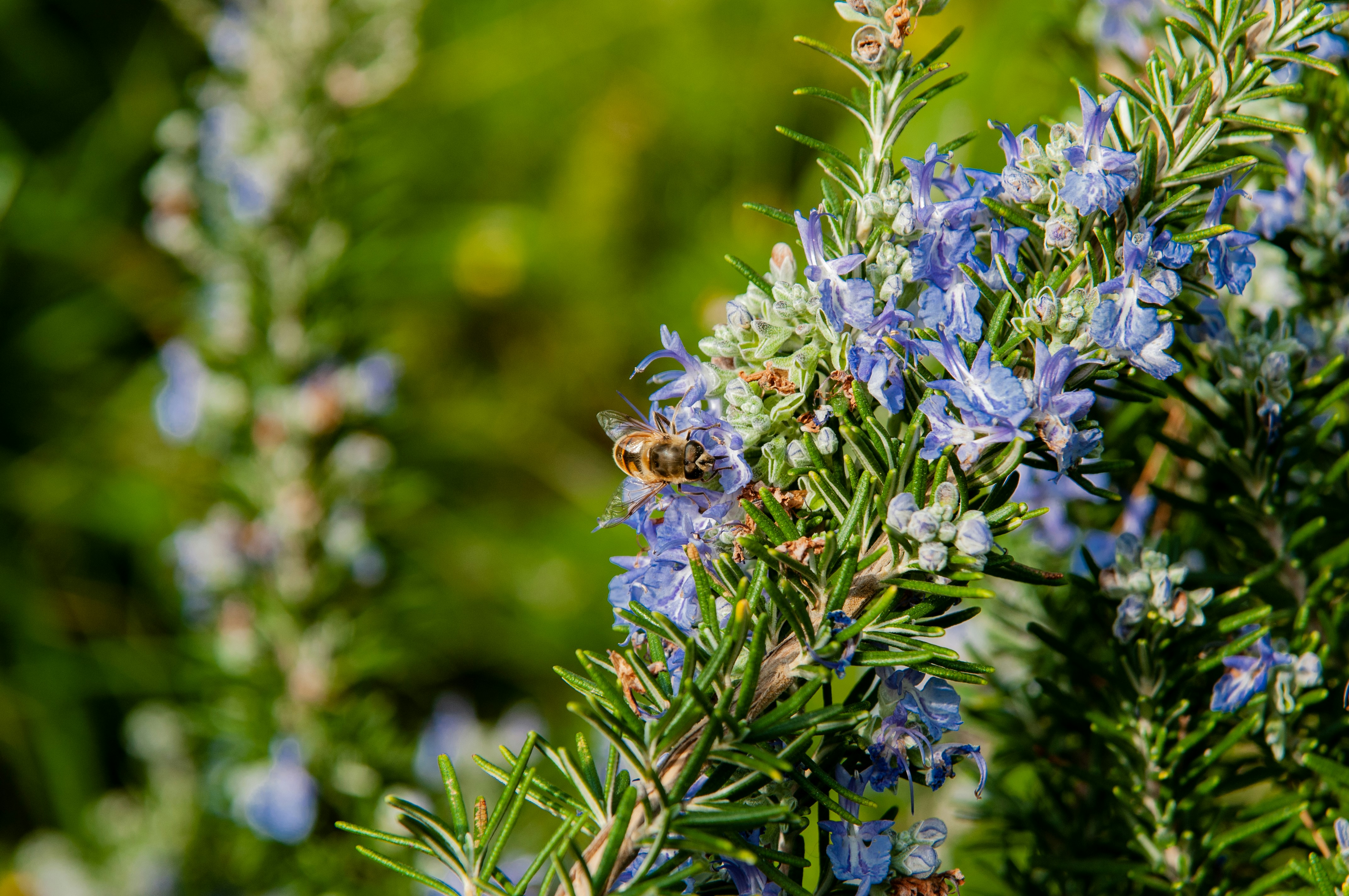Aromatic Plants: The Curative Power of Fragrant Walks

By Jose Luis Gallego, environmental communicator (@ecogallego)
When walking in the countryside in spring, we encounter olfactory impressions that compose a landscape of their own, one far more intimate and personal than the landscape we see. In the Mediterranean, especially during the month of May, when the lovely scent of aromatic plants envelops us, this sensory perception forges a much more personal connection to the earth.
The blend of the subtle scent of different kinds of lavender, the distinctive fragrance of rosemary or the elegant essence of thyme remind us that we’re surrounded by nature even before we see it.
Among the most common and fragrant lavenders found in the Mediterranean countryside is the wild or spike lavender, which botanists have classified under the scientific name Lavandula spica. This species grows into small shrubs with multiple ramifications, fine lance-like leaves that are about four centimetres long and a light whitish green colour when they bud. The flowering sprigs are an elegant violet colour, held aloft by stalks that grow taller than the shrub itself, rising like bare rods once they dry out and giving the plant a withered, frayed appearance although it remains very fragrant.

A lavender plant
Wild lavender grows in sunny areas with dry, rocky soils, making it a common sight even in the most arid plains and steppes. As for its medicinal properties, wild lavender has been used since ancient times to treat joint ailments and relieve pain caused by small sprains and bruises. Steeping 20 grams of leaves and flowers in a litre of alcohol for three days produces a natural tonic that can then be applied to the affected area with a gentle massage.
Rosemary (Rosmarinus officinalis) is another common aromatic plant whose scent many consider the defining fragrance of Mediterranean garigue. This woody evergreen shrub can grow very tall depending on the characteristics of the soil, the amount of nutrients and humidity. The leaves resemble short pine needles. Very hard and attached to the stem individually and uniformly, they are green on the surface with white undersides. The plant flowers throughout the year, although it does so more abundantly in spring, and the blossoms cluster close to the twigs and between the leaves. Their colour ranges from light blue to violet or pink.

A bee alights on a rosemary bush
Although it prefers calcareous soils, rosemary will adapt to all kinds of terrain and conditions and is therefore ubiquitous, making it a common sight during our walks through fields and forests. Rosemary tinctures are widely used in natural medicine, known for its diuretic, invigorating, carminative, and antiseptic properties, as well as treating rheumatic pain. An infusion made from boiling a handful of rosemary leaves in water for four minutes aids digestion and helps alleviate liver and gall bladder problems.
Along with the pleasant aroma of wild lavender and rosemary, there is no greater olfactory delight on our country walks than rubbing a thyme (Timus vulgaris) plant and smelling our hands. Impossible to synthesize, this delicate fragrance adds another characteristic note to the scent of the Mediterranean countryside.
A thyme plant
An unkempt-looking creeper, thyme is often found entangled with other scrubs on Mediterranean hillsides, especially along the edge of pinewoods and on sunny slopes with clay or calcareous soils. The branches are finely arranged, with narrow, flexible stalks that are nevertheless very hard and difficult to break off. If we attempt to do so, we are most likely going to uproot the entire plant.
The tiny leaves form dense little clusters. The flowers are also very small, pink or violet in colour, and usually appear in spring, releasing an intense, penetrating aroma that wafts across the fields like a natural air freshener.
Widely used in phytotherapy, thyme is a powerful antiseptic that encourages circulation, acts as an excellent digestive aid, and stimulates the nervous system. In many regions, people eat thyme soups with eggs and bread, a traditional dish that is not only nutritious and tastes delicious but also helps prevent and alleviate colds.

